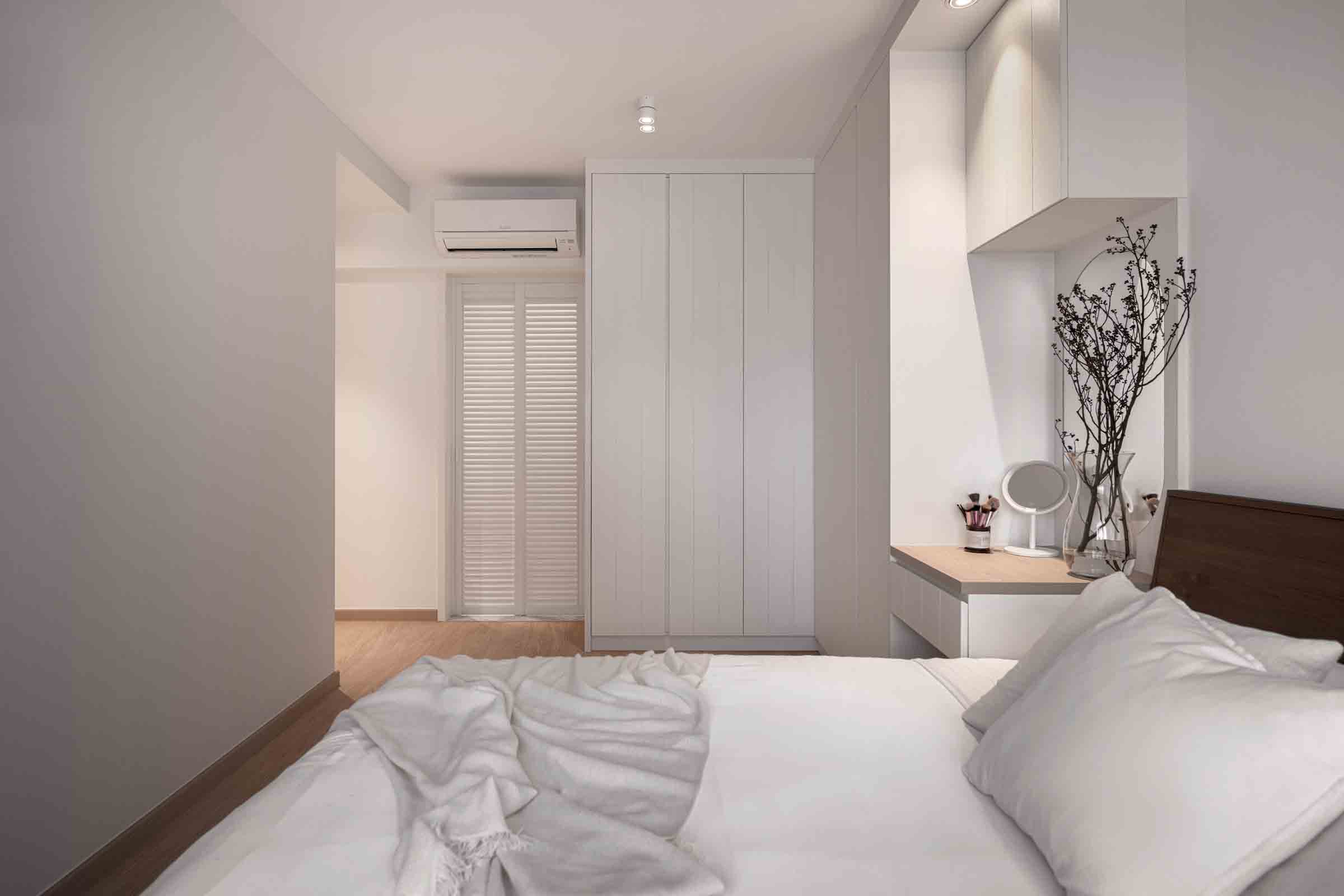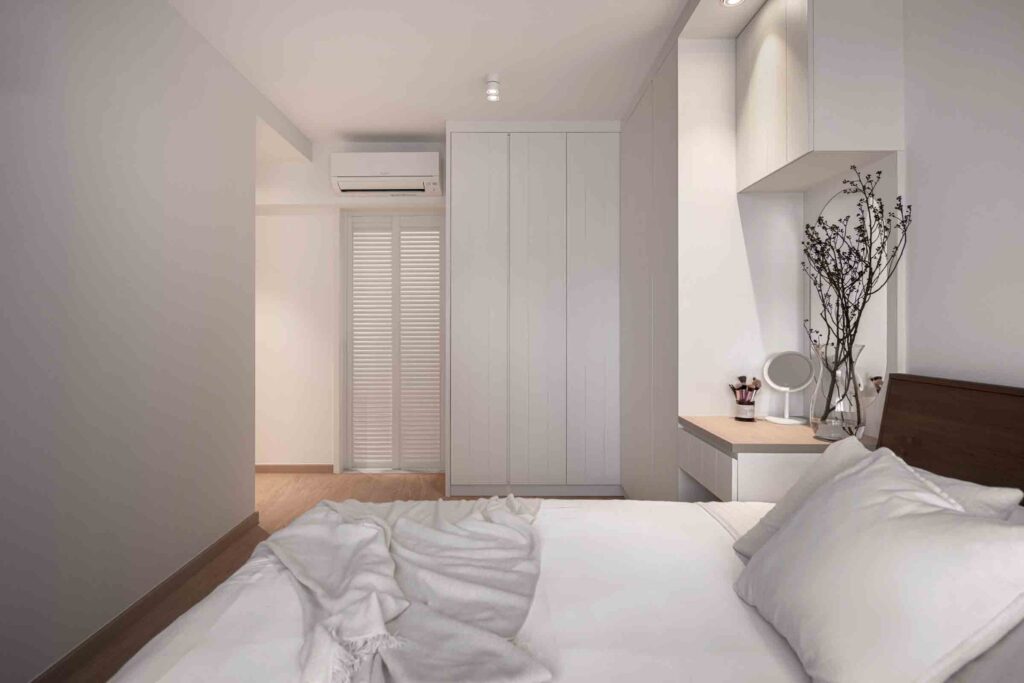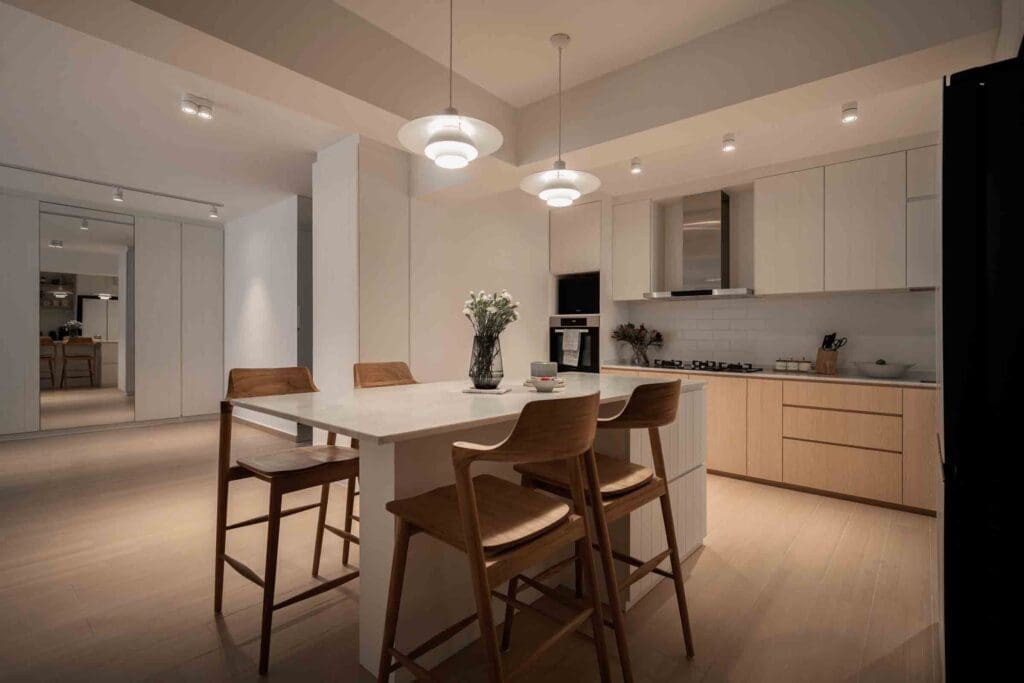Table of Contents
ToggleWhat is Japandi Interior Design?
Japandi is the fusion of Scandinavian and modern Japanese interior design styles. Both are based on minimalist design principles, with an emphasis on warmth, natural elements, and muted color palettes. Ornate, gaudy detailing is not found in Japandi. Shapes and lines, on the other hand, really stand out in these spaces, thanks to functional yet aesthetically pleasing furnishings and decor. Ample natural light and plants are also important elements in Japandi interior design. While combining these two approaches may appear surprising, Japandi is aligned with minimalism and invites us to get rid of the unnecessary in order to adopt a more authentic and relaxing interior. Forget about the paintings and pictures on your walls, the arty lamps, and any other colorful ornaments you may have accumulated in your home.Japanese Scandinavian (Japandi) Materials
Natural fibers, furniture made of natural materials, and even handmade pottery and decor are used in Japandi interior design styling. Japandi style bedroom combine natural materials with clean lines and solid muted colors for a modern feel. Look to the following key materials when styling a bedroom with Japandi in mind:- Rattan
- Wood
- Bamboo
- Linen
- Glass
- Concrete
- Plants
How to create Japanese Scandinavian (Japandi) interior design
You can discover the Japanese vs Scandinavian interior design with the help of this guide. The main feature of Japanese vs Scandinavian interior is the use of neutral colors and a minimalistic décor that makes you focus on the main items. The Japanese Scandinavian interior design is timeless, functional, functional and beautiful. Most importantly, it is incredibly easy to design and customize to your taste. The best thing about this style is that it can be easily implemented in your home, regardless of the size and shape. The elements of the Japanese Scandinavian interior design are not as important as their proportion and order. Natural and raw materials can add charm and personality to your home. Wood is welcome, as are natural materials such as rattan, wicker, and bamboo. Metal, leather, and concrete all fit into the Japandi aesthetic, especially when combined with soft textiles. Craftsmanship is also essential. In Japan and Scandinavia, there is a strong appreciation for things that are handcrafted, made with care, and built to last. The Japandi aesthetic is characterized by a more vibrant color palette than the more traditional Scandinavian style. If neutral tones like off-white, beige, and light pink are too boring for you, pair them with darker tones like dark blue, gray, or camel. These colors associated with natural materials will make your home more comfortable. Everyone dreams of having a beautiful home. But no matter how much they dream, they can’t always have it. Even if you have the cash, finding someone to help you realize your dream can be challenging. Ovon-d is a Japanese Scandinavian interior design firm in Singapore that specializes in HDB interior designs and home decoration. We cover everything from bedroom
and house design to furniture making and installation. If you need help transforming your flat or house into a beautiful space in Singapore, just call us! We’ll work with you to make sure your home is not only beautiful but also functional for your needs.
Ovon-d is a Japanese Scandinavian interior design firm in Singapore that specializes in HDB interior designs and home decoration. We cover everything from bedroom
and house design to furniture making and installation. If you need help transforming your flat or house into a beautiful space in Singapore, just call us! We’ll work with you to make sure your home is not only beautiful but also functional for your needs.




